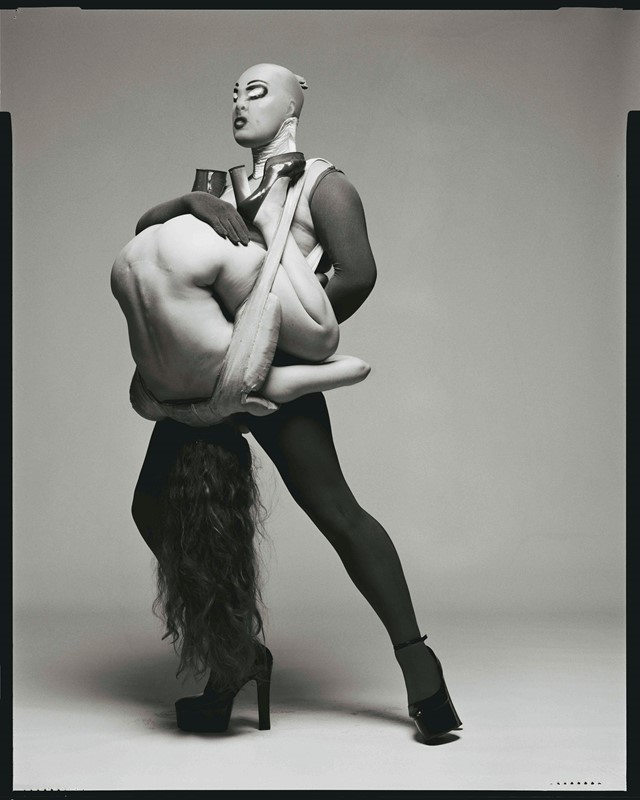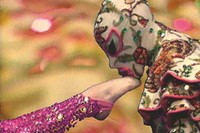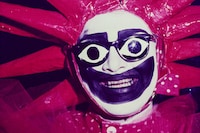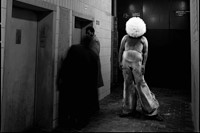Tate Modern’s new show highlights the late innovator’s transgressive performances, fashion collections and devotion to the concept of ‘embarrassment’
Leigh Bowery was one of the great countercultural creators of the 20th century. The Australian artist used his body to probe norms and niceties, with the help of fecal ablutions, trashy fabrics and brash profanities. In 1980s and 90s London, he created transgressive performances and fashion collections, embedding himself within and coming to define the queer culture of the time (his own club night Taboo launched in 1985). Tate Modern has just opened a sprawling exhibition dedicated to the late innovator, whose multi-faceted, highly provocative practice could easily become watered down within the white walls of the gallery space. Original footage on big screens, dark secretive corners and dazzling reflective surfaces all help to bring his work to life.
“Trying to convey a club in a museum is impossible but I hope we managed to give a hint of what those spaces feel like,” says Fiontán Moran, curator of Leigh Bowery!. “From the very beginning, I realised the exhibition made the most sense if focused around sites; the first room is the home, then there’s the club, and the theatre or stage. It gives you a way to think about the context in which all these things are taking place and takes you out of the tendency to think of everything he did being just about appearance or his body. And it connects with the theatrical nature of Leigh and the time.”
Rather than divide Bowery’s practice up into cleanly distinct art forms, many of the rooms show a hectic selection of costumes, video, archive photography, and written notes, all together. There are some instantly recognisable aspects of Bowery’s work that are highlighted throughout, with mannequins’ heads dripped in his iconic colourful liquids or tightly bound with fabric. The curation and its accompanying texts bring more psychological aspects of the work to the fore. Embarrassment is discussed as a key idea in Bowery’s work; perhaps surprising to some given his bombastic approach to self-expression.
“Queer identity often embraces things that are bad taste, and I think embarrassment is another form of embracing something that you should feel shameful about,” says Moran. “For Leigh, embarrassment highlighted what was supposed to be ‘correct’. He realised if he could sit with that embarrassment or embrace it, he would never be embarrassed. The more you go into that place the more you can escape from it. But he also liked embarrassing his friends. His love of entertaining and making people laugh also feeds into it. I think it’s a combination of wanting to entertain but also being interested in emotions that you would normally try to hide.”
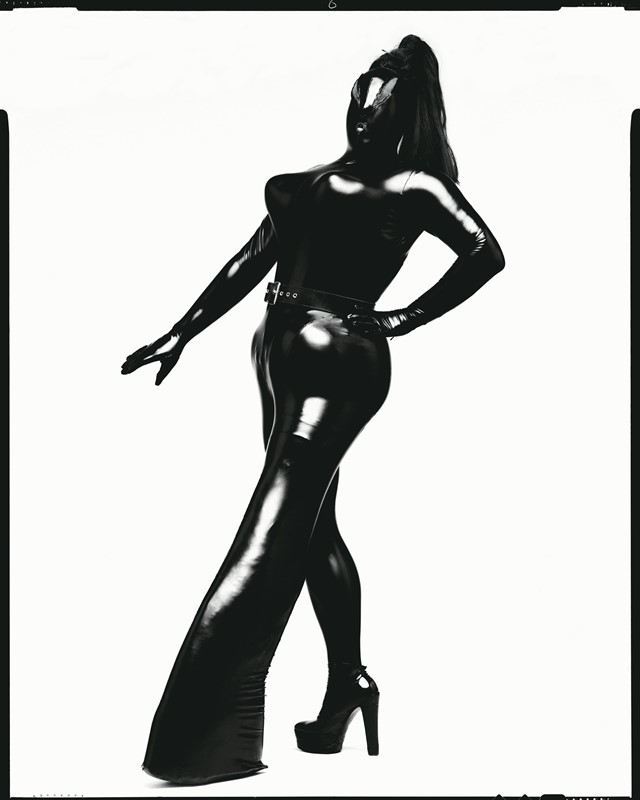
Within his performances, this was pushed to its limit. At an Aids benefit in 1990, the artist pre-filled his colon with water which he sprayed onto the front rows – along with faeces, apparently an unexpected surprise – during his performance. Such activities created a push-pull of embarrassment and shame between Bowery and his audience, ultimately challenging the messy feelings that existed in the middle. The exhibition doesn’t shy away from Bowery’s use of language or expression that would be considered offensive now, but it also shows a man who was much loved by his community. “Leigh was a controversial character and could be misogynistic or very bitchy,” says Moran. “But as part of our research talking to so many people who knew him, even those who are critical, the amount of love they have for him, and the amount of joy he brought to their lives, was very visible. There’s something very compelling about a figure who elicits such strong emotions.”
His collaborations with dancer, choreographer and close friend Michael Clark are prominent within the show, and Lucian Freud’s nude portraits of Bowery present the artist in an unusually raw, natural state. The exhibition opens with a clip from Charles Atlas’ fake documentary Hail the New Puritan, in which Bowery gets ready for a night out alongside long-time companions Rachel Auburn, Trojan and Sue Tilley. “It encapsulated many themes in the show,” says Moran. “This idea of dressing up and getting ready being a performance in and of itself. There is also a subtle hint at the Aids epidemic towards the end of the clip too. Leigh has changed into his spot look; Michael goes to kiss him and says, ‘Will I catch anything?’ In the background, Trojan says ‘Aids’ but you don’t hear it so clearly. This isn’t an exhibition about the Aids epidemic, but it had an impact on this whole community of people and the loss that left.”
Bowery died of Aids-related illness in 1994, and Moran wonders about the possible avenues he might have taken in the years after, as London saw the rise of Britpop and the YBAs also using shock tactics. His legacy reverberates through many different forms of creative expression. While he didn’t consider himself a drag queen, his influence on drag culture – especially performers who eschew traditional expressions of glamour – is enduring. His impact can be seen on fashion designers including Rick Owens and John Galliano. Artists such as Prem Sahib, who wrote a text for the exhibition catalogue, have similarly combined gallery installations with live club nights and performance. “Leigh did so many different things in his lifetime and had such a thirst for knowledge and experimentation,” says Moran. “I think this speaks to almost all contemporary artists who move between mediums and styles.”
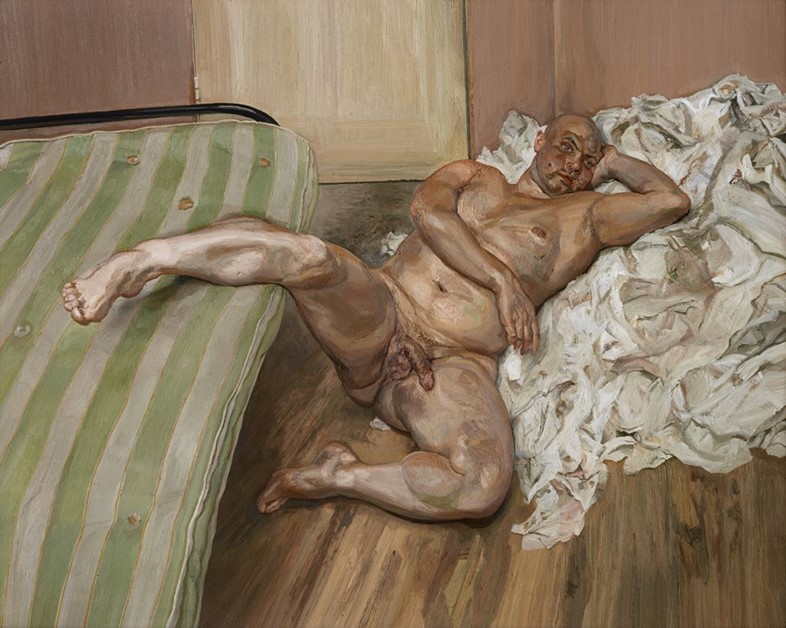
The exhibition feels in many ways like a time capsule. It captures a rumbunctious, fiercely creative time in London, in which cultural lines were being redrawn and viscously defended. It also can’t help but reflect upon the era we find ourselves in now, in which years of progress are being violently dismantled. “Having an exhibition of someone who was themselves and wanted to transgress boundaries is always important,” says Moran. “You could come away from the exhibition not liking Leigh, that would be fine. But it’s important to see this figure who really wanted to encourage people to explore their own position in the world and their own identity.”
Leigh Bowery! is on show at Tate Modern in London until 31 August 2025.
